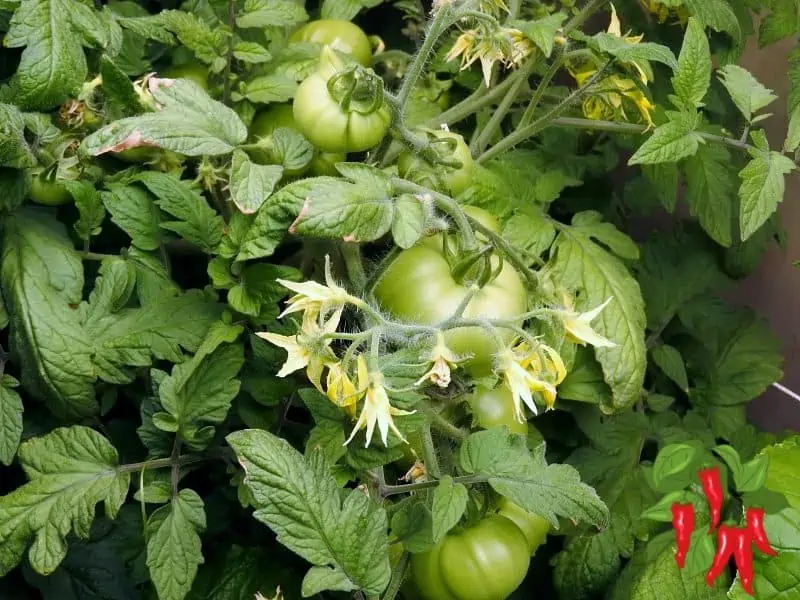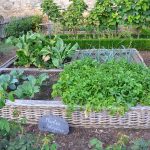This post may contain affiliate links. If you buy something from one of our links we may earn a commission. Thanks
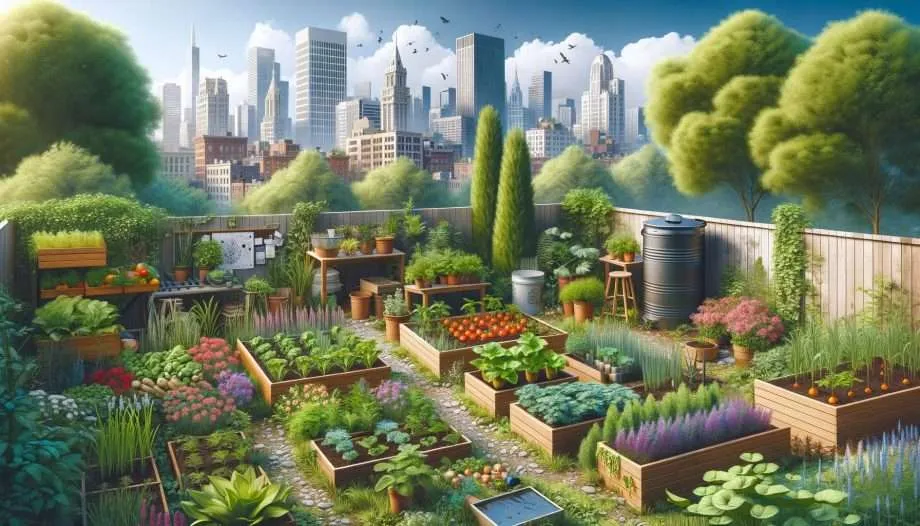
Discover the magic of urban backyard permaculture! Transform your outdoor area into a thriving, eco-friendly oasis with practical, sustainable methods.
Urban Backyard Permaculture Key Takeaways:
- Urban backyard permaculture is a sustainable approach to gardening that focuses on creating a diverse, self-sustaining ecosystem in urban spaces.
- It utilizes efficient resource management, mimics natural processes, and incorporates organic and native elements to foster a healthy, eco-friendly garden environment in the city.
Welcome to the exciting world of urban backyard permaculture! This approach brings nature’s wisdom right into your urban space, creating a lush, productive garden that’s in perfect harmony with the environment.
Have you ever dreamed of turning your backyard into a vibrant ecosystem? With backyard permaculture, you can.
It’s all about harmonizing with nature, using simple techniques to create a self-sustaining garden that benefits both you and the environment.
Urban backyard permaculture is a sustainable gardening method that mimics natural ecosystems. It involves designing your garden to create a self-sufficient, biodiverse environment, utilizing natural resources and reducing waste. This approach fosters a harmonious balance with nature in your own backyard.
Let’s embark on this green journey together!
Urban backyard permaculture is a sustainable approach to gardening that focuses on creating a diverse, self-sustaining ecosystem in urban spaces.
It utilizes efficient resource management, mimics natural processes, and incorporates organic and native elements to foster a healthy, eco-friendly garden environment in the midst of the city.
Urban Backyard Permaculture
Transform your garden into an environmental haven with urban backyard permaculture, a method that goes beyond traditional gardening. It’s about creating a natural ecosystem, right in your home gardens.
This approach isn’t just about growing plants; it’s a lifestyle, one that respects the balance of nature while providing for human needs.
Permaculture principles guide us to work with natural systems, ensuring a harmonious, sustainable, and productive garden.
From soil quality to the variety of plants, every element in backyard permaculture design contributes to a thriving, low-maintenance ecosystem that supports not only plant growth but also our well-being.
What Is Permaculture?
Permaculture is an approach to land management and settlement design that adopts arrangements observed in flourishing natural ecosystems. It includes a set of design principles derived using whole-systems thinking. It applies these principles in fields such as regenerative agriculture, town planning, rewilding, and community resilience. The term was coined in 1978 by Bill Mollison and David Holmgren, who formulated the concept in opposition to modern industrialized methods, instead adopting a more traditional or “natural” approach to agriculture. Wikipedia
Permaculture Principles: The Foundation of Home Gardens
Delve into the heart of eco-friendly gardening with permaculture principles. This guide unlocks the secrets of permaculture, a revolutionary approach that harmonizes with nature to create sustainable, thriving gardens.
By embracing these principles, you’ll learn to design spaces that are not only aesthetically pleasing but also ecologically balanced, transforming your home garden into a self-sustaining oasis.
Join us on this enlightening journey to nurture your green space with the wisdom of permaculture.
Understanding Permaculture Principles
The essence of backyard permaculture lies in its principles. These guidelines, deeply rooted in ecological and sustainable practices, teach us how to design gardens that align with the natural world.
They encourage us to observe natural ecosystems and replicate their patterns, creating spaces that are not only productive but also self-sustaining.
These principles emphasize the importance of native plants, organic matter, and a holistic approach to gardening, ensuring a natural balance that nurtures both the land and its inhabitants.
Applying Principles to Garden Design
Incorporating permaculture principles into your garden design is a transformative first step.
It involves understanding your local environment, such as climate, soil quality, and how much space you have.
By employing techniques like companion planting and using organic materials, you encourage beneficial insects and enhance soil health.
This approach turns your garden into a thriving ecosystem, where every element has a purpose and contributes to the overall well-being of the space.
Here is a table showing a variety of plants suitable for a permaculture backyard, including vegetables, herbs, flowers, fruit trees, and native plants:
| Vegetables | Herbs | Flowers | Fruit Trees | Native Plants | |
|---|---|---|---|---|---|
| 1 | Tomatoes | Basil | Marigolds | Apple | Wildflowers |
| 2 | Carrots | Mint | Nasturtiums | Pear | Grasses |
| 3 | Lettuce | Rosemary | Sunflowers | Cherry | Ferns |
| 4 | Zucchini | Thyme | Lavender | Plum | Shrubs |
| 5 | Spinach | Cilantro | Calendula | Peach | Trees |
This selection includes a mix of plants that can contribute to a diverse and thriving permaculture garden, each fulfilling different roles in the ecosystem.
The Role of Native Plants in Permaculture Gardening
Native plants are the cornerstone of any permaculture garden. They’re naturally adapted to your local climate and soil conditions, requiring far less water and maintenance than non-native species.
These plants play a crucial role in enhancing soil quality and providing habitat and food for local wildlife, including beneficial insects.
By incorporating native plants, you’re fostering a resilient, self-regulating ecosystem that thrives with minimal human intervention.
Selecting the Right Native Plants for Your Garden Area
Choosing native plants for your permaculture garden means considering several factors, like your local climate, soil type, and how much garden space you have.
Some natives are better suited for small spaces or container gardens, while others flourish in larger areas.
Variety is key – incorporating different types of plants, such as tall trees, groundcovers, and shrubs, creates diversity and resilience in your garden.
In permaculture, every plant serves a purpose, from nitrogen-fixing to providing shade or food for wildlife.
Creating a Low-Maintenance, Natural Ecosystem
Let’s embark on a journey to cultivate a low-maintenance, natural ecosystem right in your backyard.
This guide will walk you through the art of creating a garden that practically cares for itself, yet flourishes with life.
By adopting principles of permaculture and embracing nature’s patterns, you’ll discover how to build a garden that not only thrives with minimal effort but also enhances biodiversity and ecological balance.
Get ready to transform your outdoor space into a self-sustaining haven that resonates with the rhythm of the natural world.
Emulating Natural Systems with Permaculture Techniques
A fundamental aspect of permaculture is the emulation of natural systems. This means observing how elements in nature interact and replicating these patterns in your garden.
Implementing techniques like sheet mulching helps prevent soil erosion while using organic matter like dead leaves enriches the soil.
These practices foster a balanced ecosystem, promoting healthy plant growth and reducing the need for artificial interventions.
Integrating Wildlife and Human Interaction
A thriving permaculture garden is a haven for wildlife. Including elements like a water source (such as a small pond or rain barrels) attracts a variety of birds and beneficial insects.
Planting tall trees and shrubs creates habitats for different species. Designing spaces for human interaction, like seating areas or pathways, allows for a deeper connection with nature.
These techniques not only benefit the natural world but also enrich our personal experience in the garden.
The Practicalities of Permaculture: Store Energy and Maintain Soil Health
Storing Energy in the Garden
In permaculture, storing energy is vital. This involves capturing and utilizing resources like rainwater and sunlight efficiently.
Techniques like installing rain barrels for water conservation and using the thermal mass of rocks or bricks to regulate temperature are key.
This approach helps create a closed-loop system, minimizing waste and maximizing utility.
Perennial plants and fruit trees, such as dwarf varieties, are integral, providing food sources over multiple seasons, and giving your garden a sustainable, year-round yield.
Improving and Maintaining Soil Health
Soil health is the bedrock of a productive permaculture garden. Enriching the soil with organic materials like compost, leaf litter, and garden waste enhances its structure and fertility.
Practices such as composting kitchen scraps and using garden waste transform organic matter into a valuable resource, improving soil quality.
Companion planting and crop rotation prevent nutrient depletion and soil compaction, preserving the soil’s health.
Moreover, natural pest control methods maintain a balanced ecosystem, eliminating the need for harmful chemicals.
Maximizing Garden Space: Permaculture in Small and Urban Areas

Backyard permaculture is a sustainable gardening method that mimics natural ecosystems. It involves designing your garden to create a self-sufficient, biodiverse environment, utilizing natural resources and reducing waste. This approach fosters a harmonious balance with nature in your own backyard.
Permaculture in Limited Spaces
Permaculture is not limited by space. In small gardens or urban settings, techniques like container gardens and vertical gardening are effective ways to maximize limited space.
Trellises for climbing plants and wall planters can transform even the smallest areas into productive spaces.
Community gardens in urban areas offer a platform for practicing permaculture and sharing knowledge, providing fresh food, and creating green spaces for community engagement.
Urban Permaculture Techniques
Urban permaculture focuses on optimizing available space and resources.
Rain barrels for water conservation, compost bins for organic waste recycling, and container gardens for food production are easy ways to implement permaculture in city settings.
Greywater systems for household water reuse and creating edible landscapes with herbs, greens, and dwarf fruit trees add beauty and functionality.
In big cities, rooftop and balcony gardens can become mini-ecosystems, supporting beneficial insects and contributing to urban biodiversity.
Permaculture Through the Seasons: Adapting to the Climate
Seasonal Adaptation in Permaculture
Understanding and adapting to local climate and seasonal changes is a cornerstone of permaculture gardening.
Winter strategies like mulching protect soil and retain moisture, while greenhouses or cold frames extend the growing season.
Summer techniques, such as shading and mulching, conserve water and shield plants from heat.
Planting a diverse range of crops ensures a continuous harvest throughout the year, harmonizing with nature’s rhythm.
Climate-Resilient Gardening
Climate-resilient gardening means choosing plants suited to local conditions and capable of withstanding extreme weather.
Selecting drought-tolerant species for dry climates or water-loving plants for wet areas is crucial.
Garden layout is also important for optimizing sun exposure in winter and providing shade in summer.
Such mindful design creates gardens that are productive and resilient, capable of adapting to environmental changes.
Example Projects and Outcomes
Transforming a Barren Backyard into a Food Forest
One inspiring project involved turning a lifeless backyard into a vibrant food forest.
Utilizing permaculture principles, this space now yields a diverse array of fruits, vegetables, and herbs.
Key outcomes included enhanced soil quality, a surge in biodiversity, and the creation of a self-sustaining ecosystem.
This project showcases how permaculture can transform an ordinary garden into a productive and environmentally friendly space.
Urban Yard Turned Permaculture Haven
Another remarkable transformation was in a small urban yard, converted into a permaculture garden with raised beds, a rain garden, and native plantings.
This not only beautified the space but also demonstrated efficient water use and increased local pollinator populations.
It serves as a model for sustainable urban gardening, proving that even in limited spaces, permaculture principles can create a significant ecological impact.
Personal Backyard Permaculture Design Experiences
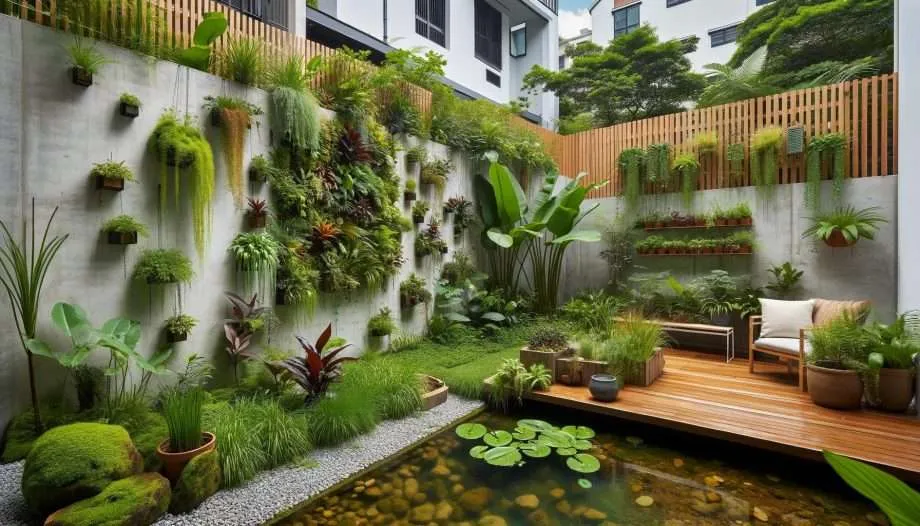
From Herb Garden to Integrated System
My personal journey in backyard permaculture began with a modest herb garden. Gradually, it evolved into an integrated system featuring companion planting, a wildlife pond, and a composting setup.
This experience was a revelation of how small steps can significantly impact the local ecosystem.
The satisfaction of nurturing a sustainable, productive garden space was immensely fulfilling.
Lawn to Food-Producing Landscape
Another project involved converting a conventional lawn into a food-producing landscape.
This shift not only reduced water usage but also provided a steady supply of fresh, organic produce.
The learning curve was steep, but the rewards of establishing a sustainable, self-reliant garden were incomparable.
Urban Backyard Permaculture FAQs
Q: How do I permaculture my backyard?
A: Start by observing your yard to understand its unique characteristics and conditions. Apply permaculture principles like diversity, efficient energy use, and stacking functions.
Begin with small projects such as composting, rainwater harvesting, and planting native species.
Q: What should be in a permaculture garden?
A: A permaculture garden should include a variety of plants serving different functions, such as food production, attracting pollinators, and improving soil health.
It should also incorporate sustainable water management and composting systems.
Q: What are the three pillars of permaculture?
A: The three pillars are Earth Care (sustainable land use), People Care (community and personal well-being), and Fair Share (equitable resource distribution and limiting consumption).
Q: How much land do you need for permaculture?
A: Permaculture can be adapted to any size of land, from small urban balconies to large rural properties. The principles remain the same, regardless of scale.
Q: Can permaculture be applied in urban areas?
A: Absolutely. Urban permaculture focuses on utilizing small spaces like balconies, rooftops, and community gardens.
Techniques like container gardening, vertical gardening, and greywater systems are especially useful in urban settings.
Conclusion: Embracing Sustainable Living Through Backyard Permaculture
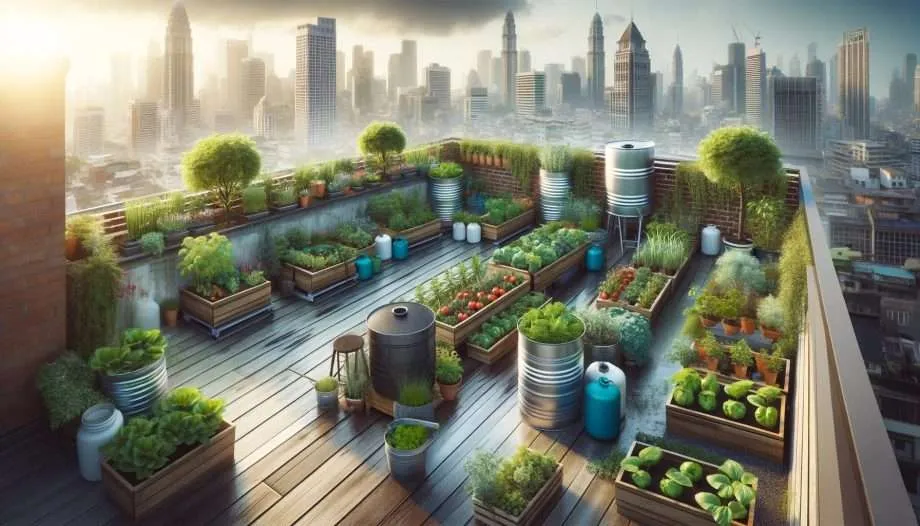
Backyard permaculture transcends traditional gardening, guiding us toward a sustainable and ecologically balanced way of living.
It’s a journey that requires observation, patience, and a willingness to learn and adapt.
By embracing permaculture principles in our gardens, we contribute to a healthier ecosystem and inspire others to consider sustainable practices.
The benefits extend beyond fresh produce; it’s about cultivating a space that nurtures both people and nature, fostering a deeper connection with the environment around us.
As we continue to explore and implement permaculture techniques, we step closer to a future where sustainable living is not just a concept, but a reality embraced in backyards around the world.
Visit my Amazon Influencer Page for videos and gardening products Grow Your Own Garden




